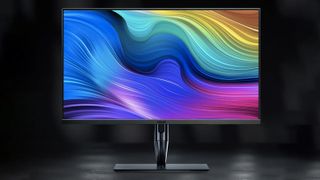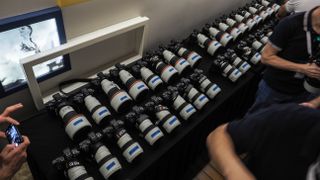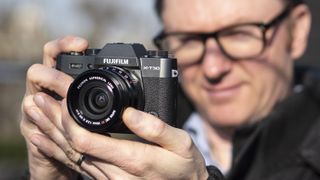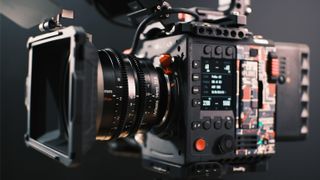If you need a high-resolution display, look to the best 4K monitors for the ideal panel. Although 5K and 8K monitors already exist, they are still very few and far between. More importantly, such displays are still incredibly expensive and out of most people’s reach. And, with very little 5K and 8K content out there to fully utilize it, getting one is a rather imprudent decision.
That makes 4K monitors the more economical option. Not that they’re cheap themselves. Just the opposite, many displays with UHD resolution are expensive – even though there are some affordable ones that have popped up in the last couple of years. That’s where the good news comes in. Not only are there cheaper 4K monitors, but more economical models should join them soon. And, it’s only a matter of time before this monitor type becomes altogether affordable, especially with Ultra HD quickly becoming the new standard of display resolution.
That isn’t to say that 1440p and even 1080p displays are no longer viable viewing solutions. However, 4K monitors do have a modest list of advantages over them. Beyond delivering sharper, more detailed visuals, they allow users to display videos, photos, and hi-res vector images at 100%, which makes them a boon to creative professionals who require a seamless creative workflow. They also offer a lot more screen real estate, which allows any editor or designer to spread out and save a bit of time.
Just bear in mind that a 4K display does require considerable processing and graphical power, especially when you’re running UHD content and rendering UHD videos. On top of that, finding one with very high refresh rates is next to impossible. There are now a few 144Hz 4K monitors on the shelves, but there aren’t 240Hz and 360Hz options available. At least, not for now.
If you do have a PC powerful enough to run 4K content and you don’t require fast refresh rates – not many creative professionals do, anyway – then it might be time to jump on the 4K bandwagon. Keeping in mind color gamuts, brightness level, contrast, screen size, features, and price, we found the best 4K monitors for photographers, video editors, content creators, graphic designers, and other creative professionals seeking that Ultra HD goodness on a monitor that will deliver on everything else.
Best 4K monitor in 2023
Why you can trust Digital Camera World
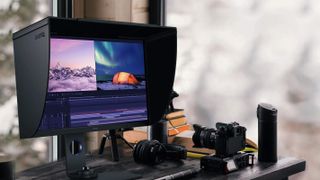
Whether it’s the inclusion of a USB-C port or the fact the BenQ SW321C PhotoVue is pre-calibrated at the factory, it’s clear that this display is made with content creators in mind. In fact, it even comes with additional hardware calibration settings so you can fine-tune it the way you want. And, though there are minor flaws such as the port placement, this is such a great monitor for creating content that they’re easy to overlook. After all, it has such a uniformly bright screen with impeccable color coverage – 99% Adobe RGB and 95% DCI-P3, to be exact – that any small issues are quickly forgotten.
Read our full review: BenQ PhotoVue SW271C review

The PD3205U delivers 4K and a 32-inch screen at a very affordable price. Its 4K 3840x2160 resolution gives a pixel density (ppi) of 140, so fine detail is still easy to see at a comfortable viewing distance. In our testing colour uniformity, colour accuracy, luminance uniformity, white point uniformity, tone response and contrast were all very good. Color space coverage of gamuts like AdobeRGB and DCI-P3 could be better, but otherwise this huge 4K monitor is superb value
Read our full review: BenQ DesignVue PD3205U review

The U2723QE itself is a 27-inch display with headline specs like 98% DCI-P3 color space coverage, 4K resolution, USB-C connectivity with Power Delivery, and even IPS Black technology to boost contrast and give deeper black depth. In our testing we found Dell's headline specs translate to excellent image quality results across the board. If you need extensive DCI-P3 color space coverage and USB-C connectivity with Power Delivery, this display is certainly worth the money and is definitely worthy of serious consideration if you're in the market for a high-performing display for image or video editing.
Read more: Dell UltraSharp U2723QE full review
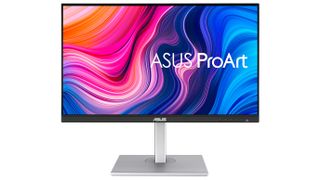
The thing about displays made for creators is they don’t come cheap, especially when you want that Ultra HD goodness as well. Luckily for economizing photographers and designers, the Asus ProArt Display PA279CV exists, touting 100% sRGB and 100% Rec. 709 color gamut and Delta E < 2 out of the box. It has a great selection of ports as well, alongside a USB hub and Asus’ ProArt Palette that allows you to really customize it to your own specifications. That’s all without costing you a fortune. As expected, there are sacrifices to be made. That 250-nit brightness, for example, won’t even let you come close to getting proper HDR. But, if you’re on a budget, there’s much value to be had in this.
Read our full review: Asus ProArt Display PA279CV review

BenQ has a history of making some of the best monitors for photo editing, and the SW272U is its latest flagship offering for discerning photo and video editors. The new 4K display boasts factory color calibration to an accuracy of Delta E ≤1.5 and is capable of displaying 100% sRGB and 99% AdobeRGB coverage - impressive stuff. Elsewhere, you get USB-C connectivity with 90W Power Delivery, plus BenQ's third-generation color Uniformity Technology, hardware color calibration, and a separate 'Hotkey Puck' remote control for easy settings adjustment and color mode switching. We found the SW272U performed brilliantly in our comprehensive testing. In fact, the only drawback here is the monitor's price, which is significantly more than some rival screens like the Dell UltraSharp U2723QE which perform almost as well as the BenQ.
Read our full BenQ PhotoVue SW272U review for more details

Eizo is one of the best-known names in computer monitor production and it has strong reputation amongst photographers and videographers thanks to producing no-compromise screens that command no-compromise prices.
The CG2700X can reproduce 99% of the Adobe RGB photo color space, and 98% of the DCI-P3 digital cinema standard. Another attractive feature for photographers and videographers is that this monitor has a calibration system built in. The hardware is recessed into the edge of the screen ready for deployment and it operates with Eizo’s free ColorNavigator 7 software which also enables features such as the ability to control a network of screens with colour matching.
The ColorEdge CG2700X’s 4K resolution ensures there is plenty of detail visible, while the 10-bit colour means that gradations look great. Meanwhile, the calibration system is easy to use and ensures that the colors are always accurate.
Inevitably, the main drawback here is the screen's hefty price. There are plenty of other 27-inch, 4K monitors that'll perform almost as well but for a lot less cash. But if only the very best will do, then it's got to be an Eizo.
Read more
• Best monitors for photo editing
• Best video editing monitors
• Best curved monitors
• Best portable monitors
• Best touch screen monitor
• Best 240Hz monitors
• Best ultra-wide monitors
• Best TV for a computer monitor
• How to calibrate a monitor
• Best monitor calibrators
• Best monitor arm
• Best monitor stands
• Best USB-C hubs
